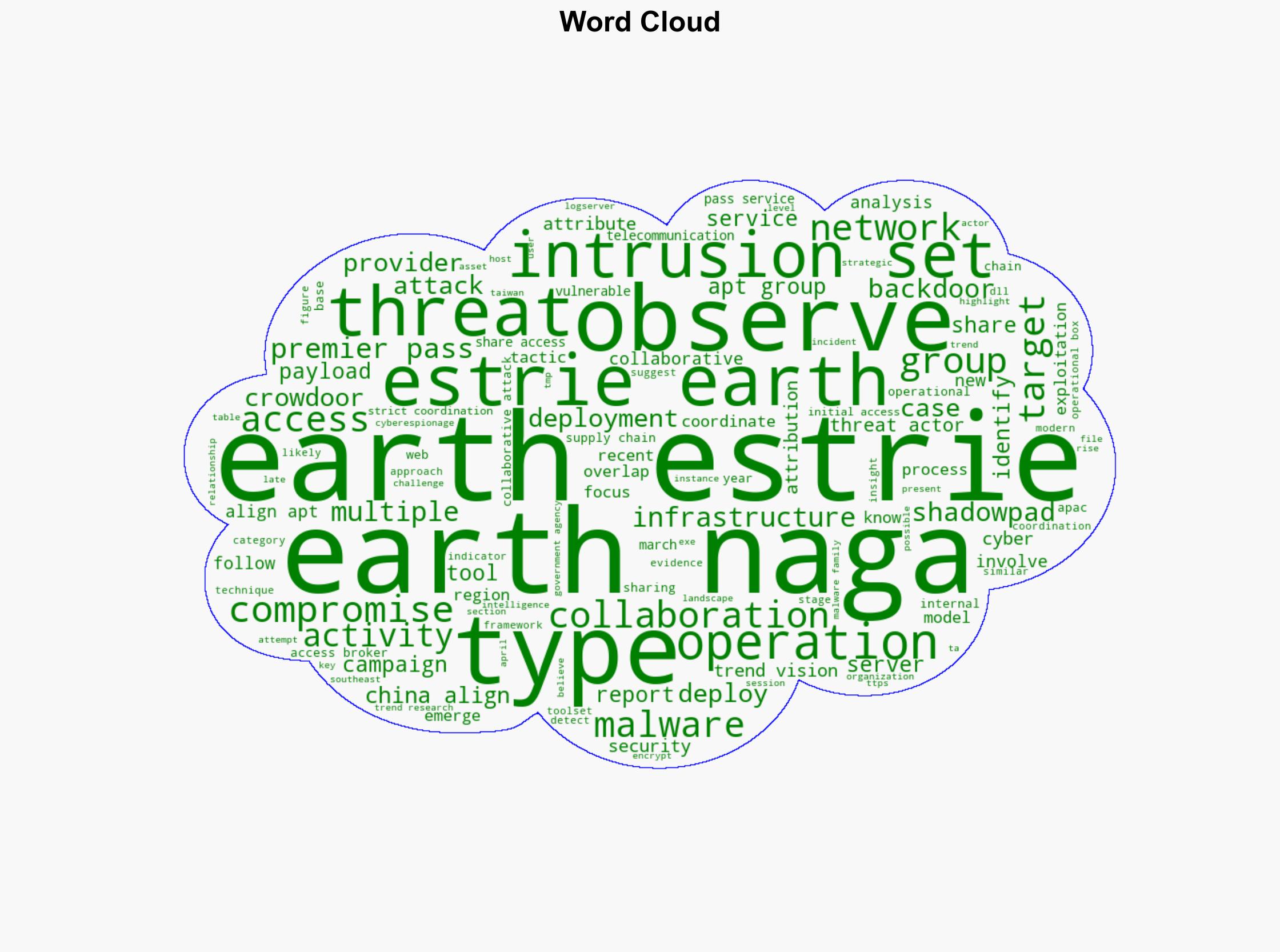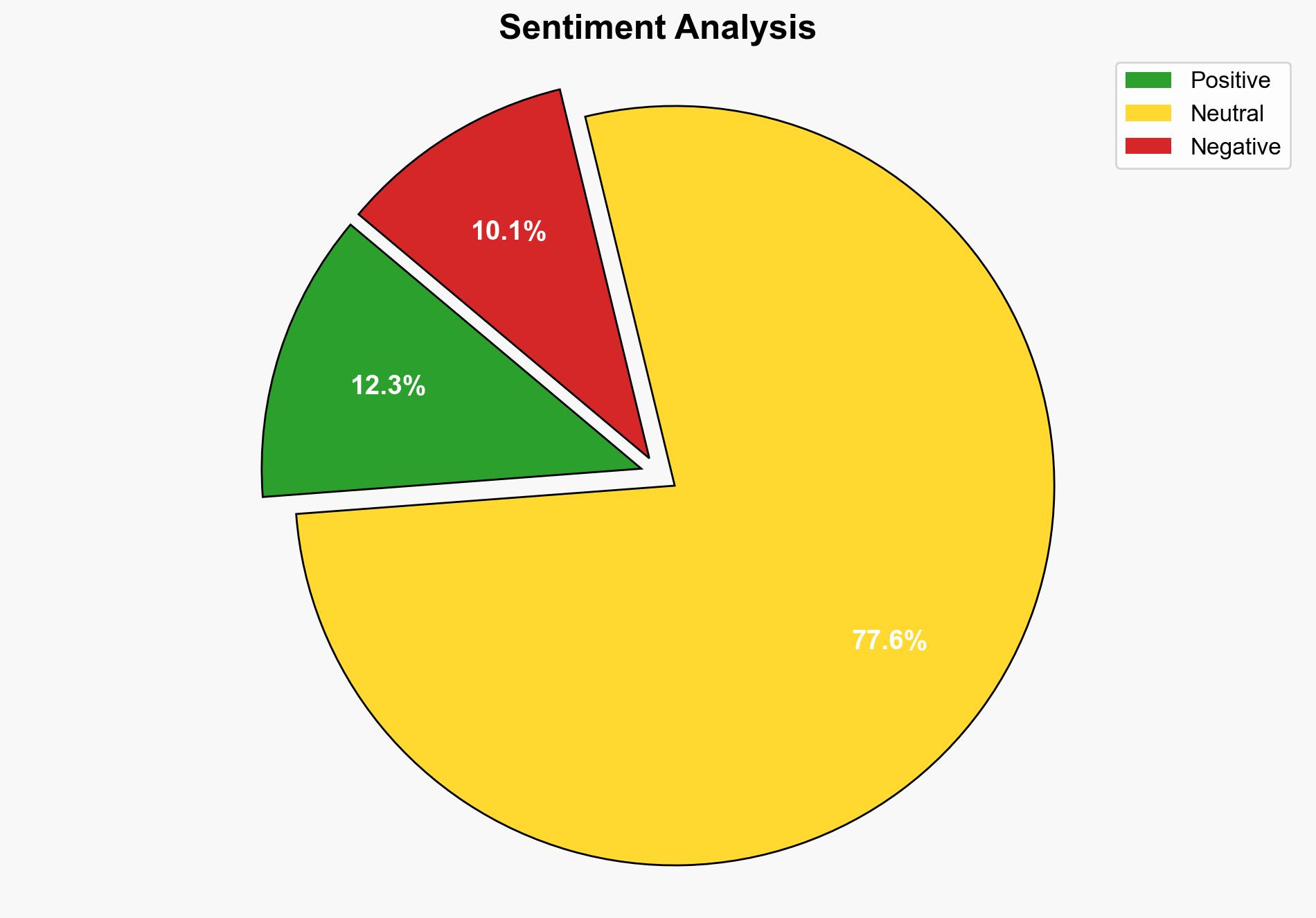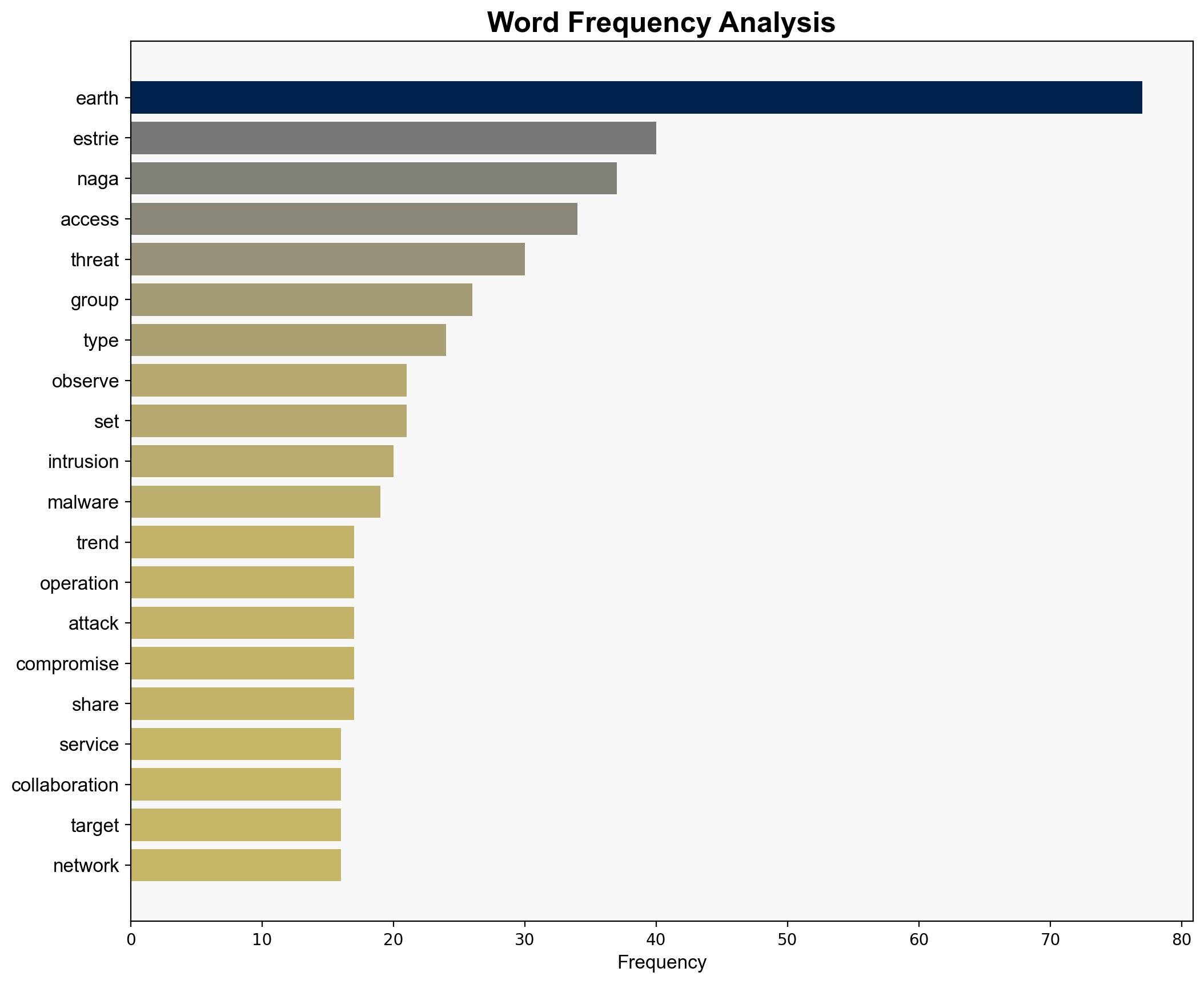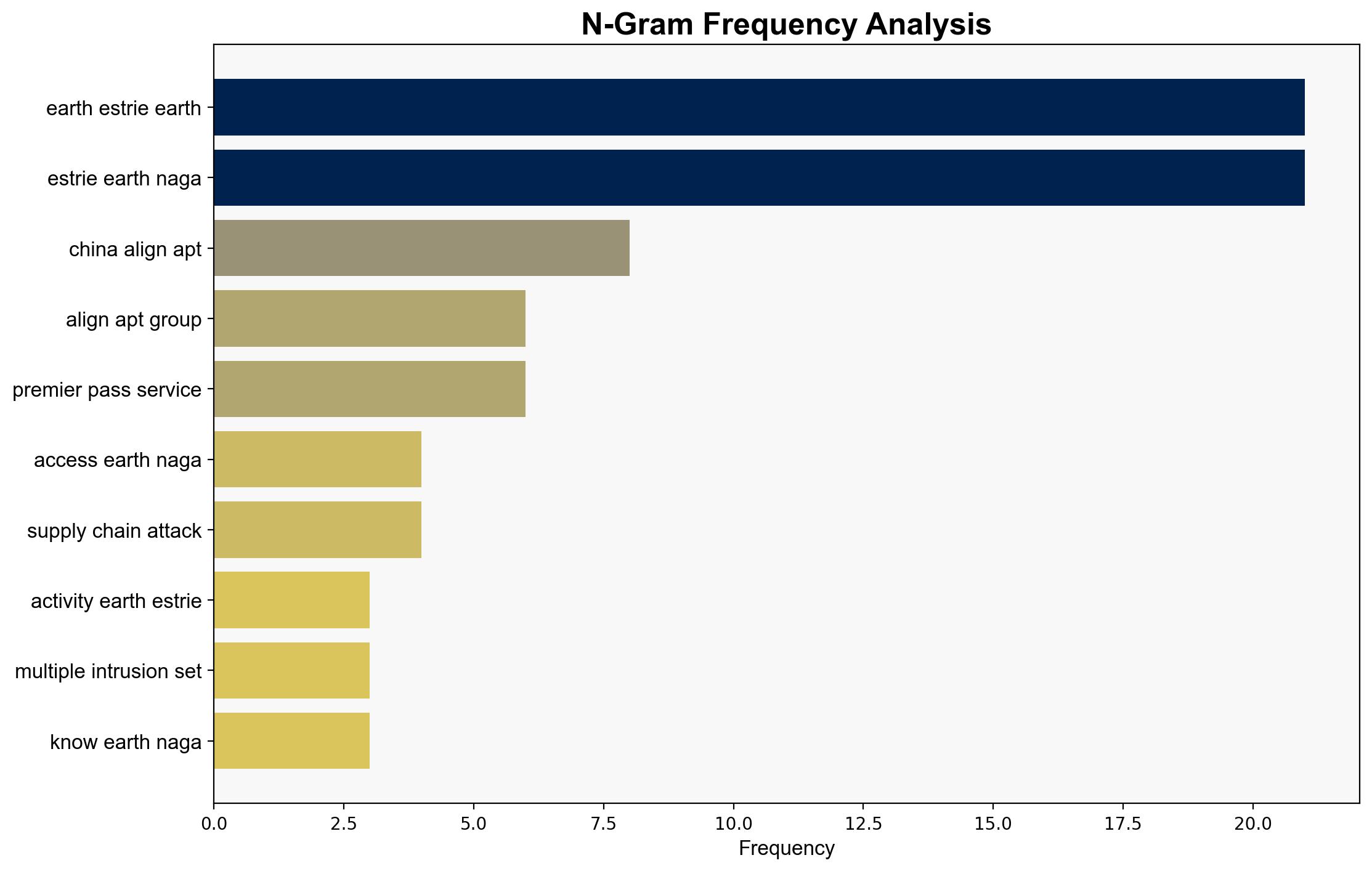The Rise of Collaborative Tactics Among China-aligned Cyber Espionage Campaigns – Trendmicro.com
Published on: 2025-10-22
Intelligence Report: The Rise of Collaborative Tactics Among China-aligned Cyber Espionage Campaigns – Trendmicro.com
1. BLUF (Bottom Line Up Front)
The strategic judgment indicates a high confidence level that China-aligned Advanced Persistent Threat (APT) groups, specifically Earth Estrie and Earth Naga, are increasingly employing collaborative tactics to enhance their cyber espionage capabilities. The most supported hypothesis is that these groups are leveraging a “Premier Pass” service model to facilitate access and share resources, complicating detection and attribution efforts. Recommended actions include enhancing multinational cyber threat intelligence sharing and developing advanced attribution techniques to counteract these collaborative operations.
2. Competing Hypotheses
1. **Hypothesis 1**: Earth Estrie and Earth Naga are using a “Premier Pass” service model to enhance their collaborative efforts, sharing access and resources to conduct more sophisticated cyber espionage campaigns.
2. **Hypothesis 2**: The observed collaboration between Earth Estrie and Earth Naga is coincidental, driven by overlapping interests in targeting similar sectors and regions, rather than a coordinated strategy.
Using the Analysis of Competing Hypotheses (ACH) 2.0, Hypothesis 1 is better supported due to the structured and repeated nature of the collaboration, as evidenced by shared tactics, techniques, and procedures (TTPs), and the complexity of operations that suggest a deliberate strategy.
3. Key Assumptions and Red Flags
– **Assumptions**: It is assumed that the collaboration is intentional and strategic rather than opportunistic. The analysis presumes that the “Premier Pass” model is a formalized service rather than an ad-hoc arrangement.
– **Red Flags**: The lack of direct evidence linking specific actors to the “Premier Pass” model raises questions about the attribution. The complexity of operations could be misinterpreted as collaboration due to shared TTPs among different groups.
– **Blind Spots**: Potential underestimation of other APT groups adopting similar tactics, which could lead to broader implications.
4. Implications and Strategic Risks
The collaborative tactics among China-aligned APT groups pose significant risks to global cybersecurity, particularly in critical sectors such as telecommunications and government. The enhanced complexity of these operations increases the difficulty of attribution, potentially leading to misdirected defensive measures. There is a risk of escalation in cyber operations as targeted entities enhance their defenses, prompting APT groups to develop more sophisticated methods.
5. Recommendations and Outlook
- Enhance international cooperation and intelligence sharing to improve detection and attribution capabilities.
- Invest in advanced cybersecurity technologies that can identify and counteract collaborative tactics.
- Scenario-based Projections:
- Best Case: Successful international collaboration leads to improved defenses and reduced impact of cyber espionage campaigns.
- Worst Case: Failure to adapt to collaborative tactics results in significant breaches in critical sectors, leading to geopolitical tensions.
- Most Likely: Gradual improvement in detection and attribution, with ongoing challenges due to evolving APT strategies.
6. Key Individuals and Entities
– Joseph Chen
– Vickie Su
– Lenart Bermejo
– Earth Estrie
– Earth Naga
7. Thematic Tags
national security threats, cybersecurity, counter-terrorism, regional focus





